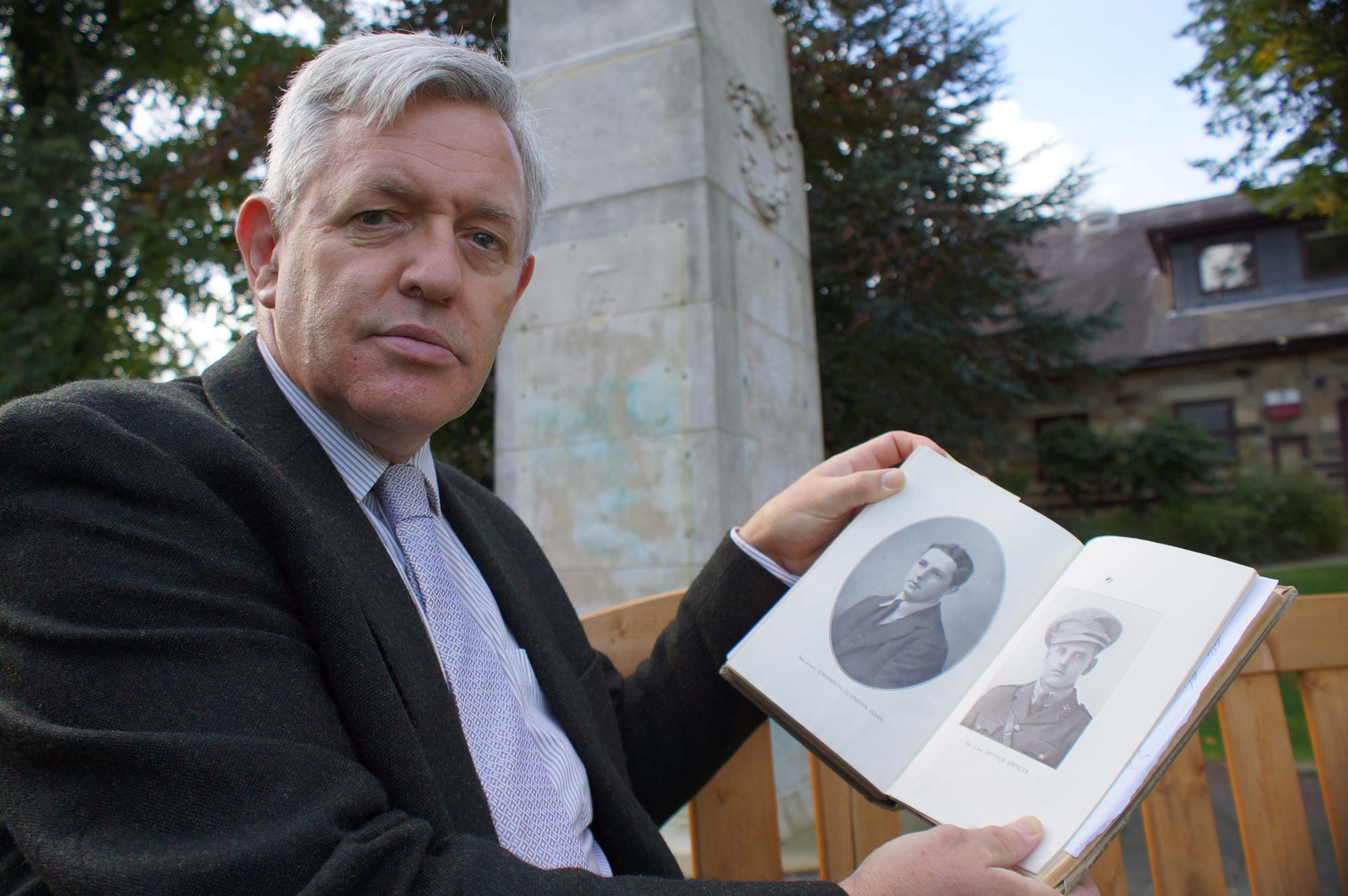A Harrogate school is commemorating the lives of pupils and teachers who died during one of the most vicious battles of the First World War, in a series of term-wide activities.
Between 1914 and 1918, 40 pupils and teachers from Ashville College, New College and Elmfield College (the latter two became incorporated into Ashville) were killed in action during the Battle of the Somme, which began on July 1 1916, and ended four and-a-half-months later.
And, to mark its 100th anniversary, the school is holding a series of events including an art installation mapping out the Western Front in poppies, and the creation of a replica World War One trench, which will be used for re-enactments.
And, to coincide with the centenary of the ending of the Battle of the Somme, a service of remembrance – complete with military band – is being held at the school on Friday, November 18.
Additionally, Ashville College archivist Andi Barker will continue his research into Ashville’s role in the war, and, later in the month, Headmaster Mark Lauder will hold an “Officers’ Mess” style formal dinner for Ashville alumni and military representatives.
The Battle of the Somme, which began at 7.30am on July 1 1916, was one of the bloodiest and most infamous battles of the war.
The first day is especially sombre in British military history, as 57,470 British soldiers were killed or wounded in one morning’s combat against the German Army.
In the four-and-a-half month campaign, 29 Ashville alumni were killed in action, with five falling on the very first day.
Mr Barker said:
It is important to remember the lives, and tragic deaths, of those from Ashville who fought at the Somme and other battlefields of the First World War.
Our centenary commemorations ensure that, even a hundred years after their deaths, Ashville will never forget the sacrifices of its school family in fighting for their country.
The events being held encompass different parts of the curriculum – namely history, art, music, geography, English Literature, modern languages and performing arts.
One of the Ashvillians to die on the first day was Second-Lieutenant Arthur Spencer, at the age of 25.
A member of the cricket and football teams while at school and keen mechanics enthusiast, he was killed while leading his men across No-Man’s Land, where, as his Commanding Officer later wrote ‘He did his duty as a soldier and a gentleman’.
Mr Barker added:
At the outbreak of war in 1914, Ashville entered the war with the same enthusiastic attitude as the rest of Britain.
This naïve optimism would continue throughout the first two years of war until the events of 1916 left Ashville College robbed of almost 30 of its school family. Fifteen per cent of those former pupils and teachers who enlisted and fought never made it home.
The centenary of the battle has particular significance to the history and memory of the school. July 1 was the worst day for Ashville, as five Ashvillians died in the initial attack.
It even led to a change in the school’s official magazine, which, after summer 1916, replaced its triumphal poems and nationalism with obituaries and a segment named Ashville and the War, about the Ashville alumni at the front.
Last year, the school’s war memorial, paid for by Old Ashvillians and dedicated in 1922, was reconfigured to make it a more prominent feature of the college campus.
The memorial plaques in the adjacent Memorial Hall – naming all those who fell in First World War – were restored following an appeal by the Ashvillian Society (the school’s alumni group).








I was pleased to see the memorial with my great uncles name, I still have the large bronze coin sent to my grandmother with regrets on her brothers demise.
Also we have regimental pictures of the machine gun corps.